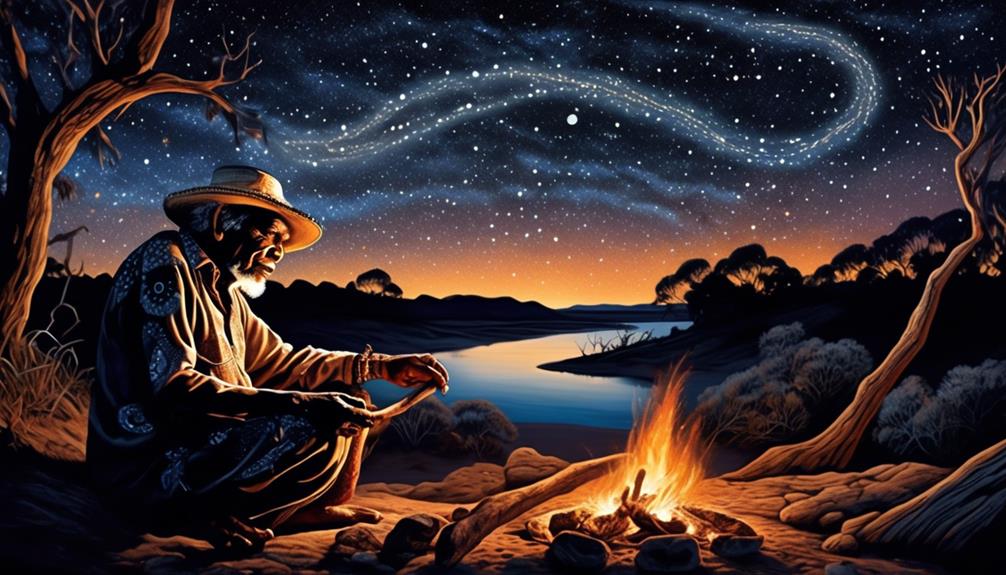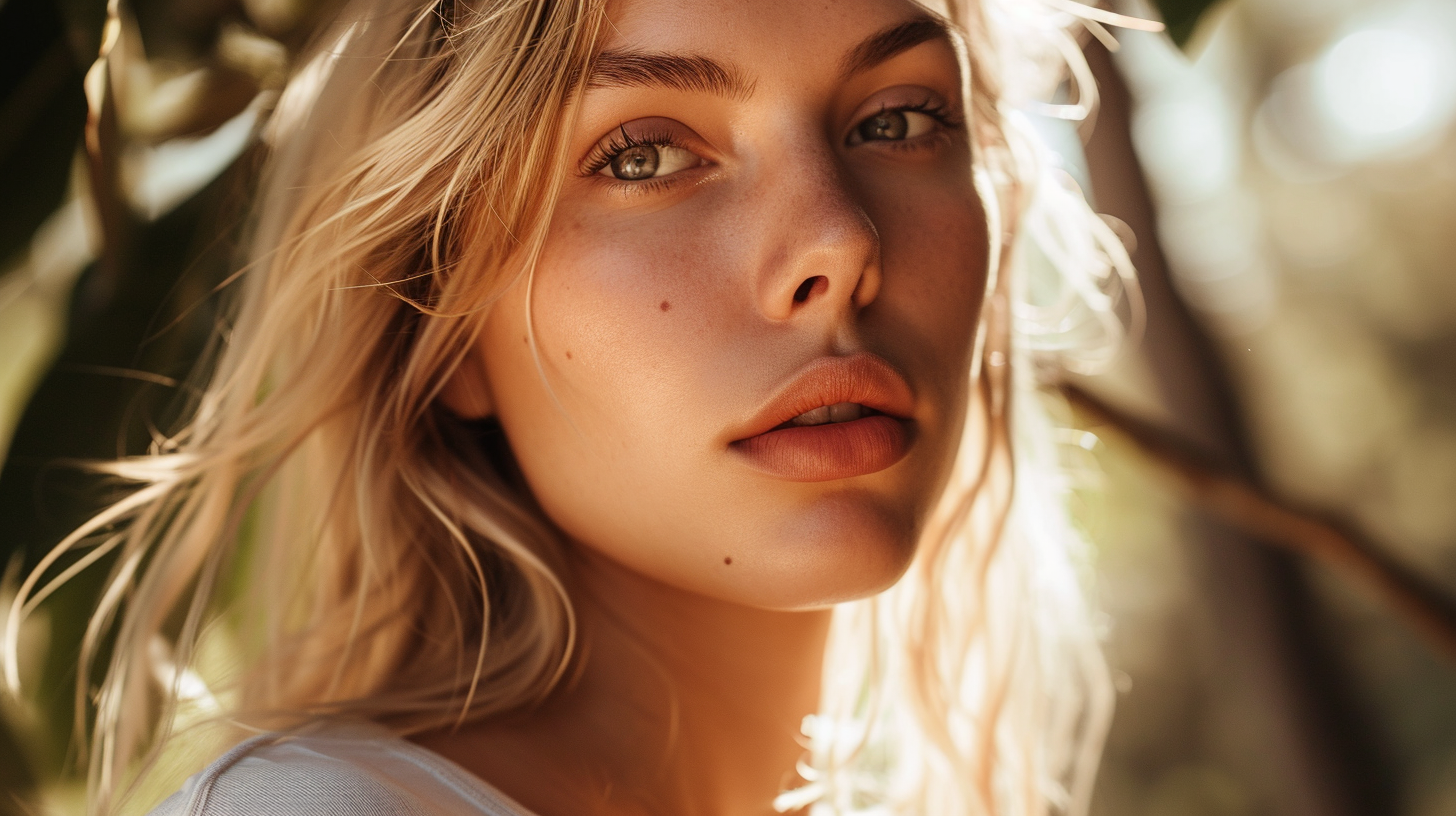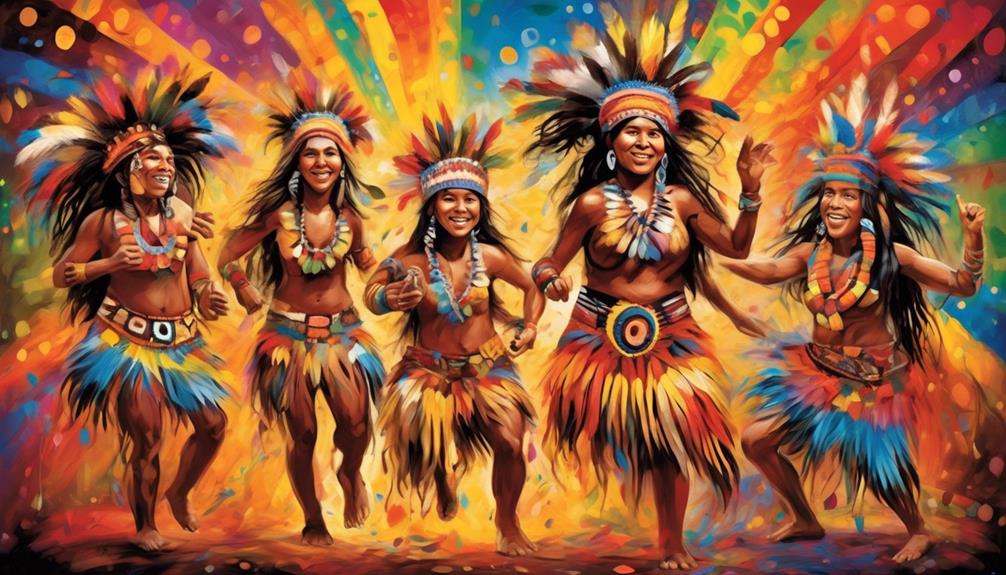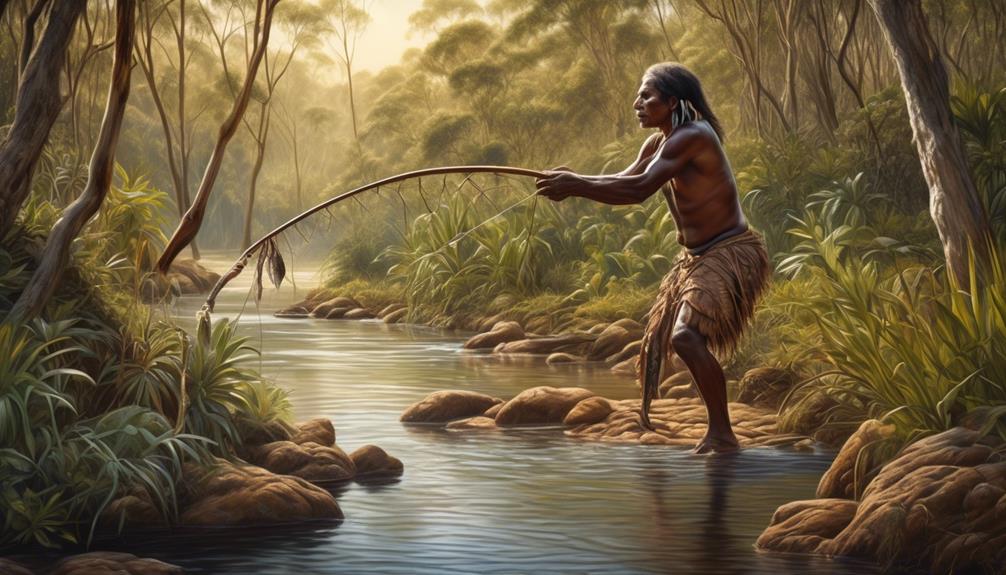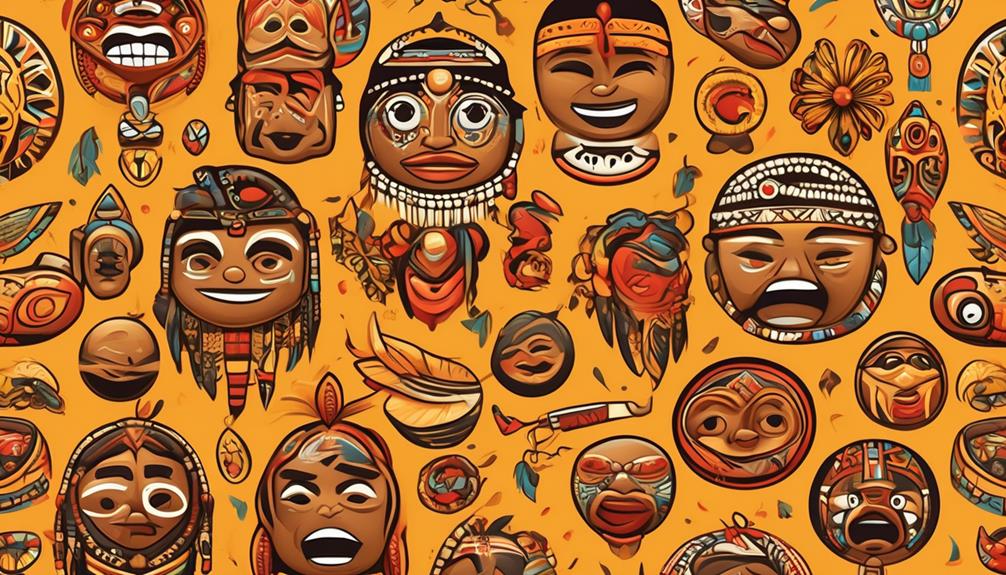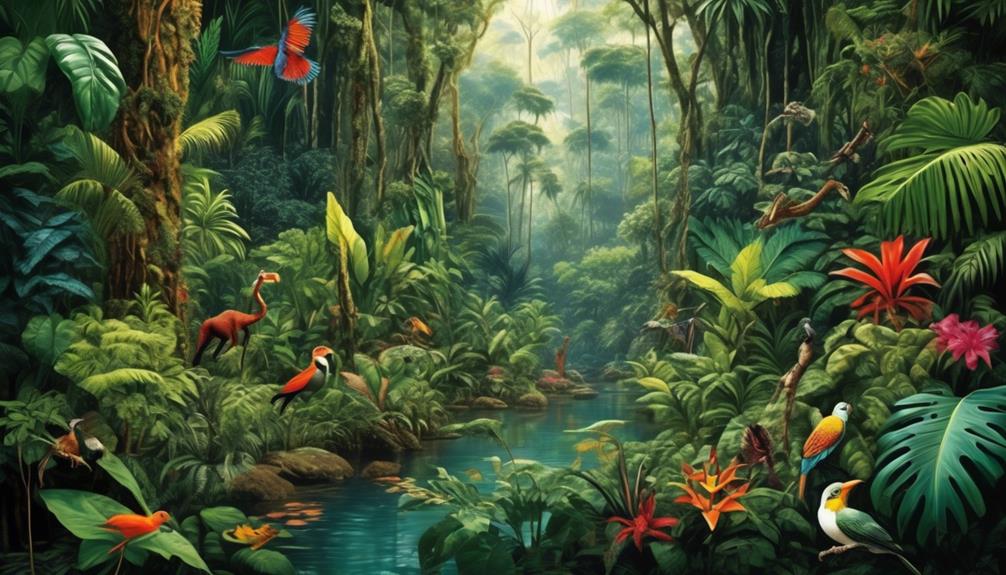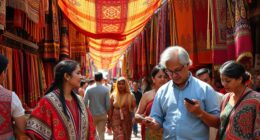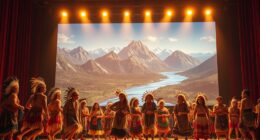How much do we really know about the history of Indigenous peoples?
The rich and complex tapestry of Indigenous cultures and traditions in Australia holds a wealth of knowledge that often goes unexplored.
As we begin to peel back the layers of this history, we uncover stories of resilience, resistance, and survival.
However, there is still much more to uncover and understand about the impact of British colonization, the ongoing political activism and advocacy, and the future prospects for reconciliation and healing.
Key Takeaways
- The Dreamtime and Creation Stories are integral to Aboriginal history and culture.
- British colonization had a significant impact on Aboriginal cultures, leading to resistance and survival strategies.
- The Stolen Generations and assimilation policies have had a lasting impact on Aboriginal communities.
- Land rights and sovereignty have been important issues for Aboriginal people, leading to legal battles and the Indigenous Sovereignty Movement.
The Dreamtime and Creation Stories
In Aboriginal culture, the Dreamtime and Creation Stories are foundational narratives that provide an understanding of the origins of the world and all living things. These Dreamtime beliefs and creation stories aren't just tales; they're the essence of our spiritual connection to the land, the animals, and each other.
Passed down through generations via oral traditions, these stories hold immense cultural significance for us, as they shape our worldview and guide our behavior.
The Dreamtime beliefs aren't confined to the past; they're alive in the present and inform our future. They aren't myths but living stories that connect us to our ancestral beings and the natural world. The Dreamtime is where the past, present, and future meet, and it's through these stories that we understand our place in the world and our responsibilities to it.
Our creation stories aren't mere explanations of how the world came to be; they're a means of understanding our interconnectedness with the land and all living beings. They teach us respect, reciprocity, and the importance of living in harmony with nature.
These stories aren't just part of our history; they're the guiding principles of our present and our hopes for the future. Therefore, they're integral to our identity and our existence.
Pre-Colonial Aboriginal Cultures
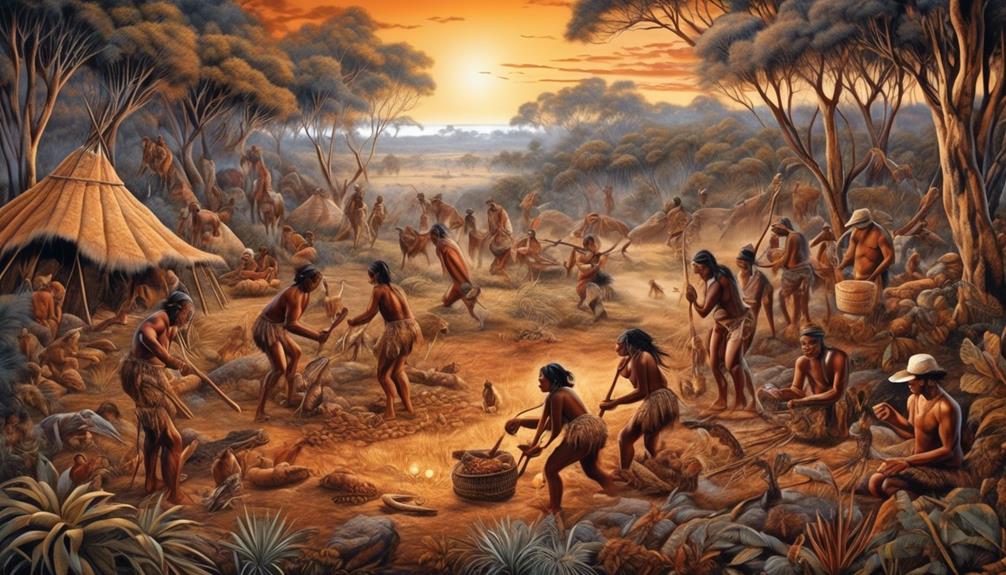
How did Aboriginal cultures evolve prior to colonization, and what were their key characteristics and values?
Pre-colonial Aboriginal cultures were rich and diverse, shaped by traditions, customs, and values that have been passed down through generations. Here are key aspects of these cultures:
- Tribal Customs: Aboriginal societies were organized into various tribes, each with its own unique customs, languages, and social structures. These customs played a crucial role in governing interpersonal relationships, resolving conflicts, and maintaining harmony within the community.
- Traditional Practices: The daily lives of Aboriginal peoples were intertwined with a wide array of traditional practices, including hunting, gathering, fishing, and ceremonies. These practices were deeply rooted in spiritual beliefs and were essential for the survival and well-being of the community.
- Connection to Land: Land held profound spiritual and cultural significance for Aboriginal peoples. They had a deep connection to the land, viewing it as a source of sustenance, spirituality, and identity. Their custodianship of the land was based on a profound respect for nature and the environment.
- Oral Traditions: Aboriginal cultures relied heavily on oral traditions to convey knowledge, history, and spiritual beliefs. Elders played a central role in passing down stories, songs, and wisdom to younger generations, ensuring the preservation of their heritage.
The pre-colonial Aboriginal cultures were characterized by a strong sense of community, a deep connection to the land, and a rich tapestry of traditions and customs that contributed to their resilience and cultural vibrancy.
Impact of British Colonization
Upon the arrival of British colonization, the intricate social structures and deeply rooted traditions of the pre-colonial Aboriginal cultures were profoundly disrupted, leading to significant and enduring impacts on the Indigenous communities. The British colonial impact was marked by policies aimed at cultural assimilation, which sought to replace Indigenous cultures with British norms and values. This led to the erosion of traditional Indigenous practices, languages, and belief systems, as well as the breakdown of familial and community structures that had sustained the Aboriginal peoples for generations.
In the face of such colonial pressure, Indigenous resistance and cultural preservation became vital strategies for survival. Many Indigenous communities actively resisted the attempts to assimilate them into British culture, seeking to maintain their unique identities and traditional ways of life. Despite facing immense challenges, they tenaciously preserved their cultural heritage through oral traditions, ceremonies, and art forms, thus safeguarding their ancestral knowledge and wisdom for future generations.
The impact of British colonization on Aboriginal communities continues to reverberate today, shaping the socio-economic disparities and health inequities experienced by Indigenous peoples. Understanding and acknowledging this historical trauma is crucial for reconciliation and healing. By recognizing the resilience and strength of Indigenous communities in the face of cultural assimilation, we can work towards fostering a society that values and respects the diversity of Indigenous cultures, while supporting their ongoing efforts to preserve and revitalize their rich heritage.
Resistance and Survival
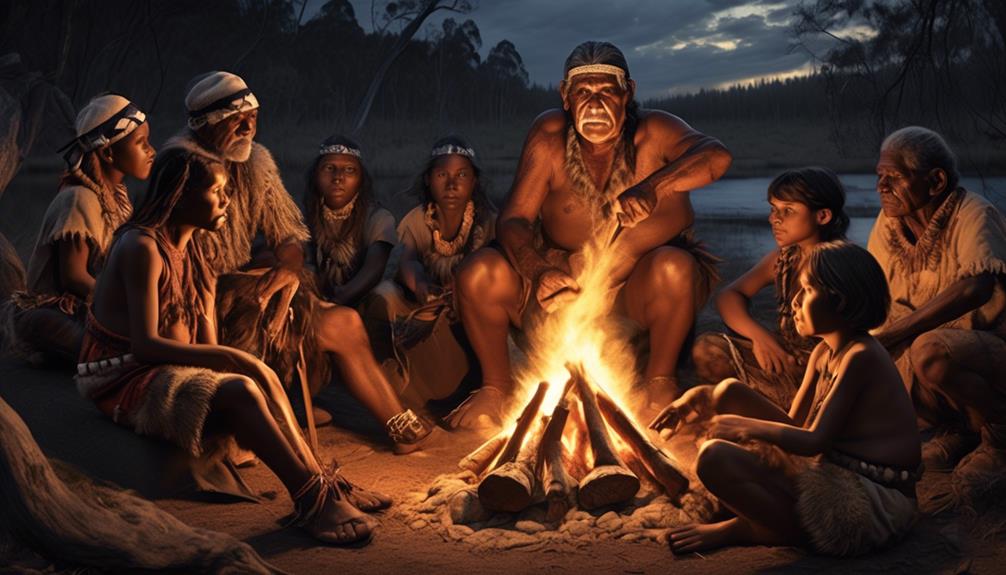
Reflecting on the resilience and strength of Indigenous communities amidst colonial pressures, we witness a profound commitment to preserving their cultural heritage and traditional ways of life. This unwavering dedication has led to the development of remarkable resistance strategies and survival techniques that have allowed Indigenous peoples to persevere through centuries of adversity.
- Cultural Preservation: Indigenous communities have fiercely guarded their languages, stories, and traditions, passing them down through generations despite attempts to erase and assimilate their cultures.
- Sustainable Living: By utilizing traditional ecological knowledge, Indigenous peoples have sustained themselves through hunting, fishing, and farming practices that are deeply rooted in respect for the land and its resources.
- Community Solidarity: In the face of external pressures, Indigenous communities have come together to support each other, forming networks of mutual aid and solidarity to navigate through difficult times.
- Adaptive Resistance: Indigenous peoples have demonstrated remarkable adaptability, finding ways to resist oppressive systems while simultaneously preserving their identities and ways of life.
The resilience and strength of Indigenous communities in upholding their cultural heritage and traditional practices are awe-inspiring. Their resistance strategies and survival techniques not only reflect their determination to thrive against all odds but also offer valuable lessons in sustainable living, community solidarity, and adaptive resistance for all who seek to build a more just and equitable world.
Stolen Generations and Assimilation Policies
Resilient in the face of adversity, Indigenous communities have faced the devastating impact of Stolen Generations and Assimilation Policies, enduring the profound repercussions of these historical injustices. The forced removal of Indigenous children from their families and communities, and the implementation of assimilation policies, aimed to erase Indigenous cultures and identities. The intergenerational trauma caused by these policies continues to affect Indigenous communities, challenging the preservation of their cultural heritage and identity.
The Australian government's formal apology in 2008 was a significant step towards acknowledging the immense harm caused by these policies. However, the journey towards healing and reconciliation is ongoing. Efforts to provide reparations to the Stolen Generations and support cultural preservation are crucial for addressing the legacy of this dark chapter in history. Truth-telling about the experiences of the Stolen Generations is essential for both Indigenous and non-Indigenous Australians to understand the lasting impact of these injustices.
The healing journey involves confronting the colonial legacy that perpetuated these harmful policies and working towards creating a more inclusive and equitable society. It requires a commitment to supporting Indigenous communities in reclaiming and celebrating their cultural identity. By amplifying Indigenous voices and experiences, we can foster understanding, empathy, and solidarity.
Together, we can strive to create a future where the rights and dignity of Indigenous peoples are honored, and where the wounds of the past are healed.
Land Rights and Sovereignty
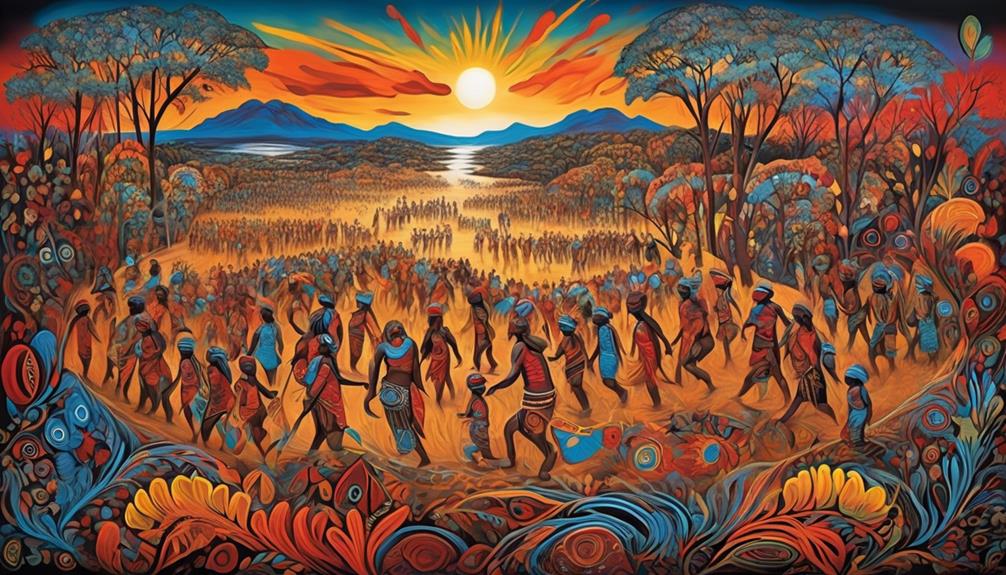
We've seen the ongoing struggle for land ownership rights and the movement for Indigenous sovereignty gain significant attention in recent years.
The legal battles for land have been a focal point in the fight for Aboriginal rights and self-determination.
These issues are deeply intertwined with the history and identity of Indigenous peoples, and they continue to shape the path forward for reconciliation and justice.
Land Ownership Struggles
Through centuries of struggle and perseverance, Aboriginal communities have fought for their land rights and sovereignty, facing immense challenges along the way. The ownership struggles and historical injustices have deeply impacted our communities, but we continue to advocate for our inherent rights to the land.
Here's why this fight for land ownership is crucial:
- Cultural Preservation: Our connection to the land is integral to our culture and identity, making land ownership essential for preserving our heritage.
- Socio-Economic Empowerment: Owning land provides opportunities for economic self-sufficiency, empowering our communities to thrive independently.
- Environmental Stewardship: As traditional custodians of the land, ownership allows us to continue our role as responsible stewards of the environment.
- Sovereignty and Autonomy: Land ownership is fundamental to our sovereignty, enabling self-governance and autonomy in decision-making processes.
Indigenous Sovereignty Movement
The Indigenous Sovereignty Movement for land rights and autonomy has been a pivotal force in advocating for the inherent rights of Aboriginal communities. As Indigenous peoples, we assert our right to self-determination and the protection of our ancestral lands. Our movement seeks to challenge colonial systems and assert Indigenous rights, acknowledging that our connection to the land is not just physical, but spiritual and cultural. Through this movement, we aim to dismantle oppressive structures, reclaim our traditional governance, and ensure the sustainability of our communities. Our struggle for self-determination is deeply rooted in our history and continues to shape our present and future. We stand united in demanding recognition of our sovereignty and the right to govern ourselves in accordance with our customs and traditions.
| Indigenous Rights | Self-Determination | Land Autonomy | Cultural Preservation |
|---|---|---|---|
| Advocating for the recognition of inherent rights | Asserting the right to govern ourselves | Challenging colonial land ownership systems | Protecting spiritual and cultural connections to the land |
Legal Battles for Land
Engaging in legal battles for land rights and sovereignty has been a critical aspect of our ongoing struggle for the recognition of our inherent rights as Indigenous peoples. The fight for land ownership is deeply rooted in our history and continues to shape our present and future.
Here's why it matters:
- Historical Injustices: Our ancestors' lands were forcibly taken, and reclaiming them is a way to address past wrongs.
- Cultural Preservation: Land isn't just property; it's integral to our cultural identity and traditional practices.
- Economic Empowerment: Securing land rights enables us to build sustainable economies for our communities.
- Sovereignty and Self-Determination: Control over our lands is fundamental to our self-governance and autonomy.
We are committed to these legal battles because they're essential to our liberation and the preservation of our culture and identity.
Contemporary Aboriginal Identity

Navigating the complexities of contemporary Aboriginal identity requires an understanding of the rich tapestry of cultural, social, and historical influences. In our current reality, cultural identity is a dynamic and multifaceted concept, shaped by traditional practices, intergenerational trauma, and the ongoing effects of colonization. We, as a community, face contemporary challenges that intersect with our cultural identity, such as the preservation of languages, the revitalization of cultural practices, and the assertion of sovereignty over our lands.
Our cultural identity is deeply intertwined with our sense of self and belonging. The struggle to maintain our cultural heritage in the face of modernity and globalization is an ongoing battle. We must confront the impacts of historical trauma, including the forced assimilation policies of the past, which continue to reverberate through our communities today. However, we also celebrate the resilience and strength that has allowed us to preserve our cultural traditions and adapt to the changing world around us.
Contemporary Aboriginal identity is also marked by a quest for self-determination and empowerment. We're reclaiming our narratives, challenging stereotypes, and asserting our presence in various spheres of society. Our journey towards contemporary Aboriginal identity is one of resilience, resistance, and reclamation.
As we navigate these complexities, we must honor the diversity and individual experiences within our community, fostering a space where every Aboriginal person feels seen, heard, and valued.
Aboriginal Art and Cultural Expression
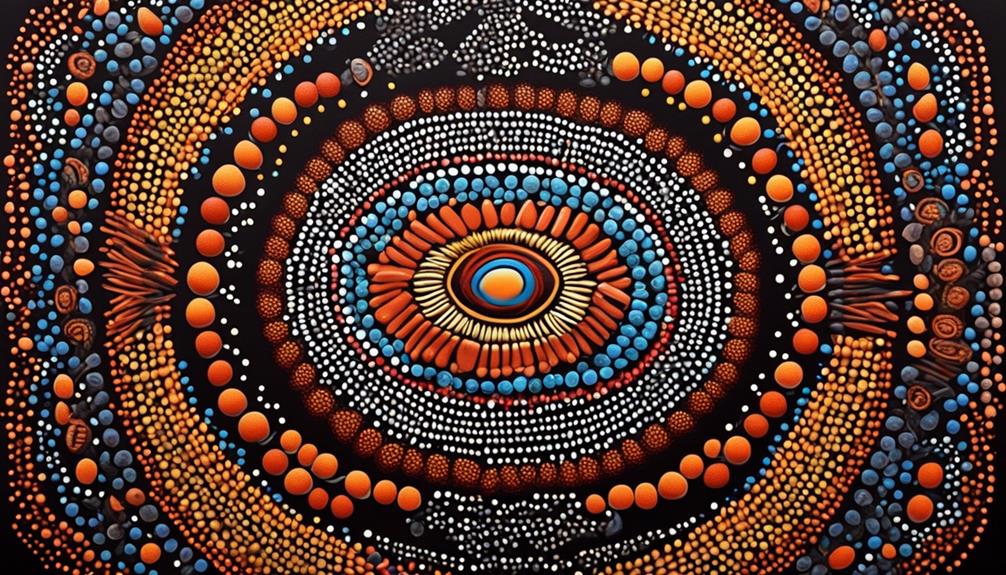
Embracing our traditional art forms and cultural expressions allows us to share our stories and connect with our heritage in meaningful ways. Aboriginal art is a powerful vehicle for cultural preservation and a means of expressing our identities. Here are four reasons why Aboriginal art and cultural expression are vital:
- Cultural Preservation: Through art, we preserve our ancestral knowledge, traditions, and spiritual beliefs. Each stroke of the brush or mark on a piece of bark carries the stories of our people, ensuring that our rich cultural heritage endures for future generations.
- Traditional Storytelling: Aboriginal art serves as a visual form of traditional storytelling, depicting creation stories, ancestral journeys, and daily life. These artworks aren't merely decorative; they're intricate narratives that convey our history and wisdom.
- Modern Interpretation: While rooted in tradition, Aboriginal art also evolves with modern interpretations. Artists infuse contemporary issues, experiences, and perspectives into their work, ensuring that our cultural expression remains relevant and dynamic.
- Connecting Communities: Aboriginal art fosters connections within our communities and beyond. It serves as a bridge for non-Indigenous people to engage with and understand our culture, promoting empathy, respect, and unity.
Our art and cultural expressions are integral to our identity, serving as a form of resistance, resilience, and celebration. By embracing and honoring these forms, we continue to affirm our existence and contribute to the liberation of our people.
Indigenous Knowledge and Traditions
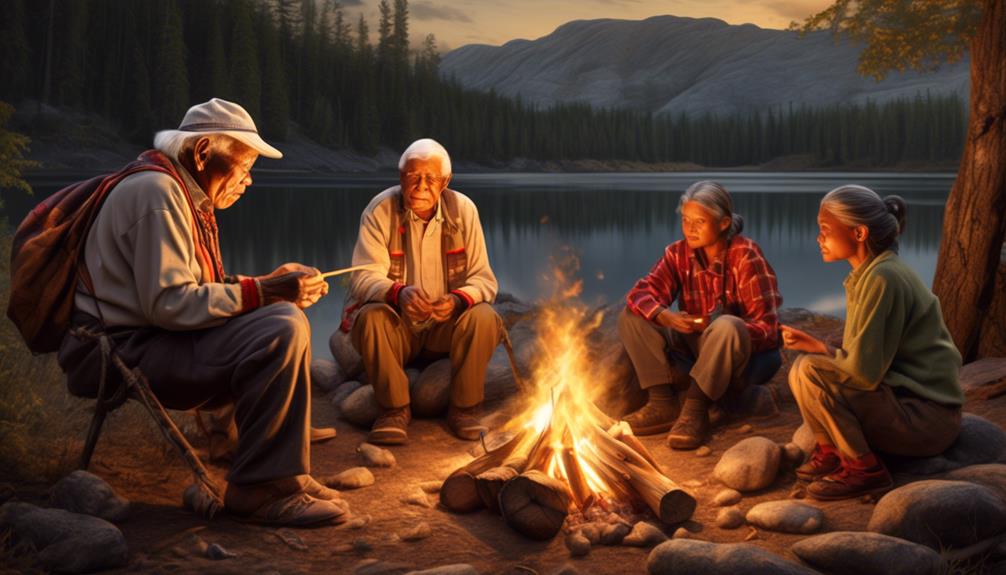
Preserving and passing down Indigenous knowledge and traditions is a vital aspect of our cultural heritage and identity. As Indigenous peoples, we are committed to the preservation and revitalization of our traditional knowledge, which plays a crucial role in maintaining environmental sustainability and nurturing our communities. Our traditional knowledge encompasses a deep understanding of the natural world, sustainable resource management, and holistic approaches to living in harmony with the environment.
To emphasize the significance of Indigenous knowledge and traditions, let's explore how they contribute to cultural revitalization and environmental sustainability:
| Indigenous Preservation | Cultural Revitalization | Environmental Sustainability |
|---|---|---|
| Upholding ancestral teachings | Strengthening cultural practices and ceremonies | Protecting biodiversity and ecosystems |
| Transmitting knowledge through oral traditions | Fostering intergenerational learning | Promoting sustainable land use and conservation |
| Honoring sacred sites and traditional territories | Reclaiming traditional languages | Implementing traditional ecological knowledge in resource management |
Our efforts in preserving and passing down Indigenous knowledge and traditions not only honor our ancestors but also ensure a sustainable future for generations to come. By recognizing and respecting the wisdom of our elders and the resilience of our communities, we continue to uphold the interconnectedness of all living beings and the environment.
Health and Social Issues
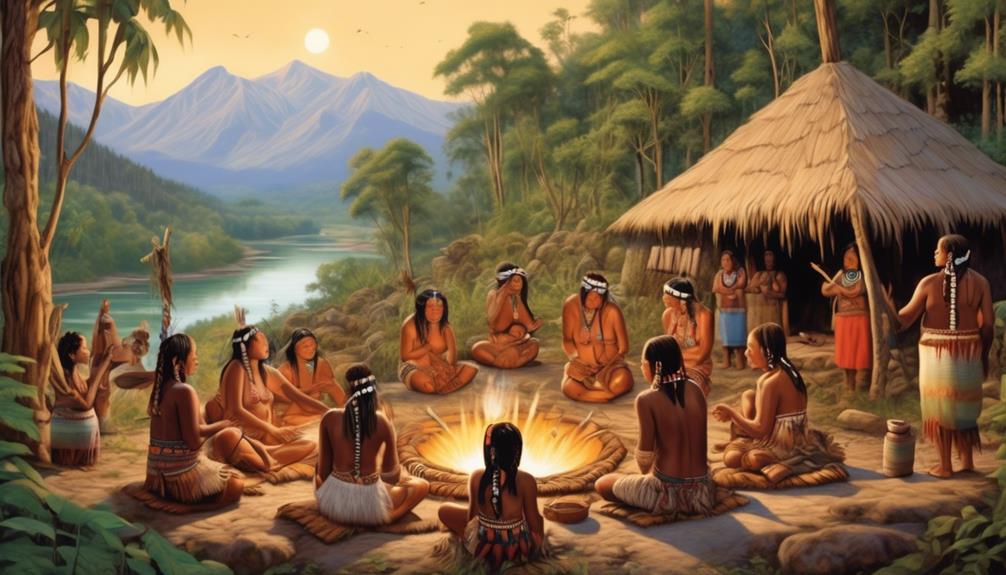
As we consider Aboriginal history, it's crucial to acknowledge the significant healthcare disparities and the impact of poverty on the health of Indigenous communities.
These issues have deeply affected the well-being of many Indigenous peoples, and it's important to address them with empathy and understanding.
Healthcare Disparities
Addressing healthcare disparities among Aboriginal communities is a critical priority for creating a more equitable and accessible healthcare system. When considering access to healthcare for Aboriginal people, it's essential to acknowledge the historical and ongoing barriers they face. These disparities are rooted in systemic issues such as geographical isolation, limited resources, and cultural insensitivity within healthcare systems.
To bridge this gap, it's imperative to prioritize culturally competent care that respects Aboriginal traditions and beliefs. This involves training healthcare providers to understand and respect cultural differences, as well as integrating traditional healing practices into healthcare services.
Additionally, increasing the availability of healthcare facilities in remote Aboriginal communities is vital. Collaborating with Aboriginal leaders and communities to develop tailored healthcare solutions is crucial for addressing these disparities and building a more inclusive healthcare system.
Poverty and Health
Recognizing the interconnected nature of healthcare disparities and social determinants, we understand that poverty plays a significant role in shaping the health outcomes of Aboriginal communities. Economic barriers often hinder access to healthcare, leading to disproportionately high rates of chronic illnesses and reduced life expectancies within these communities. However, it is essential to acknowledge the cultural resilience and strengths that exist within Aboriginal communities, despite the challenges they face.
| Challenges | Impact | Solutions |
|---|---|---|
| Limited healthcare access | Higher rates of untreated illnesses | Community health initiatives |
| Economic barriers | Financial strain affecting well-being | Advocacy for equitable healthcare funding |
| Social determinants | Adverse living conditions impacting health | Holistic community support |
Empowering Aboriginal communities through improved access to healthcare, addressing economic barriers, and recognizing social determinants are crucial steps towards achieving health equity and liberation.
Education and Employment Challenges
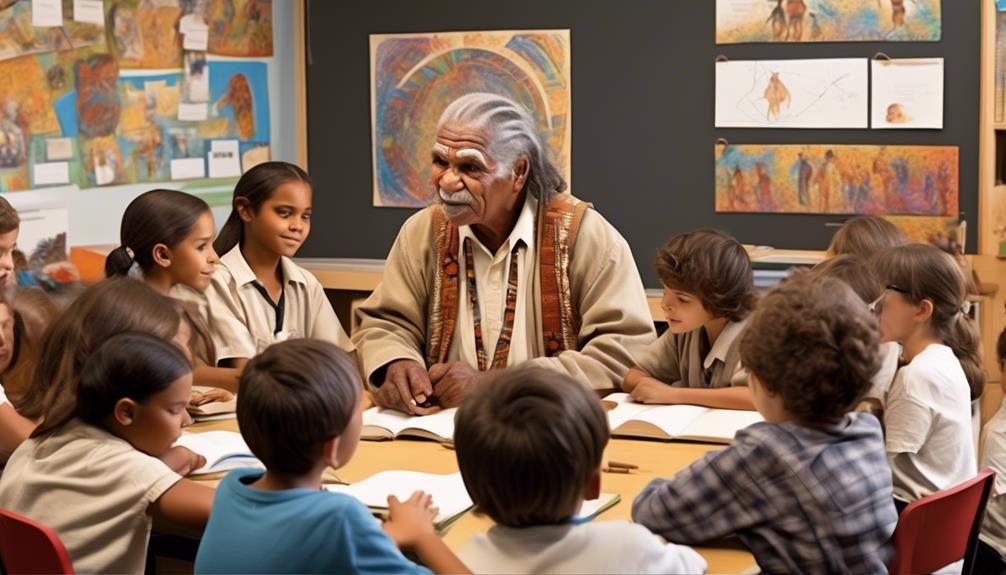
Many Aboriginal communities continue to face significant challenges in accessing quality education and securing meaningful employment opportunities. These challenges are deeply rooted in historical and systemic issues, perpetuating education disparities and employment barriers for Indigenous peoples. It's crucial to address these issues with sensitivity and understanding, striving for economic empowerment and educational equity for all.
- Historical Trauma: The intergenerational impact of colonial policies, such as residential schools and forced assimilation, has led to trauma that affects educational outcomes and employment prospects for many Indigenous individuals.
- Lack of Resources: Many Aboriginal communities lack access to quality educational resources, including proper infrastructure, qualified teachers, and culturally relevant curriculum. This contributes to disparities in educational attainment and hinders career opportunities.
- Discrimination and Stereotypes: Indigenous individuals often face discrimination and stereotyping in educational institutions and the workforce, leading to limited employment options and unequal treatment.
- Cultural Barriers: The clash between traditional Indigenous values and Western education and employment systems can create barriers for Aboriginal individuals, impacting their ability to fully engage in these systems.
It is imperative to work towards dismantling these barriers by promoting culturally sensitive education, providing resources that reflect Indigenous perspectives, and actively addressing discrimination in the workplace. By recognizing the importance of Indigenous knowledge and fostering inclusive environments, we can strive for economic empowerment and educational equity for Aboriginal communities.
Political Activism and Advocacy
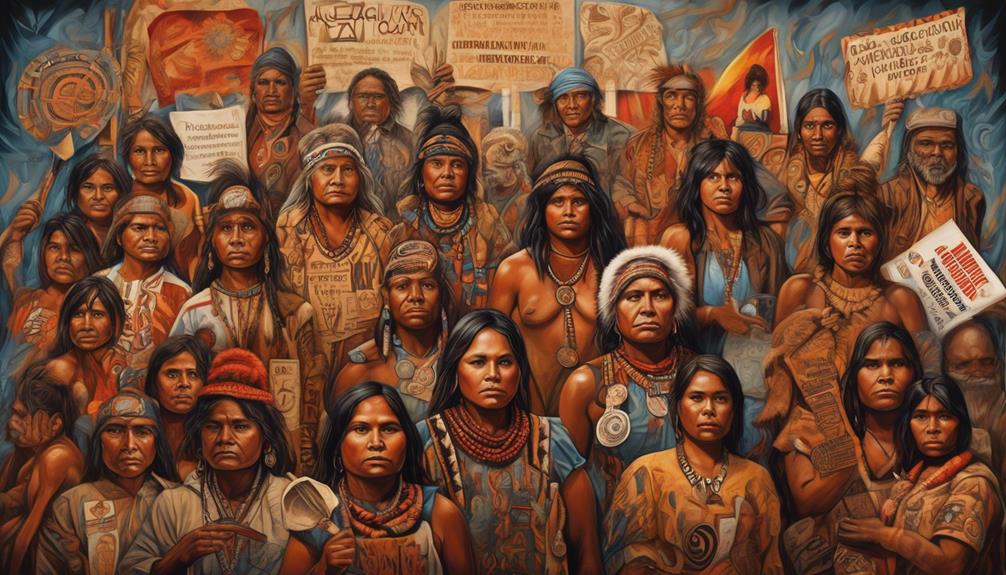
We stand in solidarity with Indigenous communities as they advocate for their rights and political representation. Political activism within Indigenous advocacy is crucial for addressing systemic inequalities and historical injustices. It's essential to recognize and support the efforts of Indigenous peoples as they strive for meaningful political engagement and representation.
Indigenous political activism encompasses a wide range of strategies, including grassroots mobilization, legal advocacy, and participation in mainstream political processes. Through these efforts, Indigenous communities seek to influence policies that directly impact their lives and to secure their rightful place in decision-making bodies.
As allies, we must actively listen to the voices of Indigenous activists and leaders, amplify their demands, and advocate for the dismantling of oppressive structures that hinder their political participation. It's imperative to uplift Indigenous-led initiatives and movements, recognizing the expertise and wisdom within Indigenous communities.
Moreover, advocating for Indigenous political empowerment entails acknowledging the sovereignty and self-determination of Indigenous nations. This involves respecting treaty rights, land stewardship, and the preservation of cultural heritage. By centering Indigenous knowledge and perspectives, we can work towards creating more inclusive and just political systems.
Reconciliation and Healing
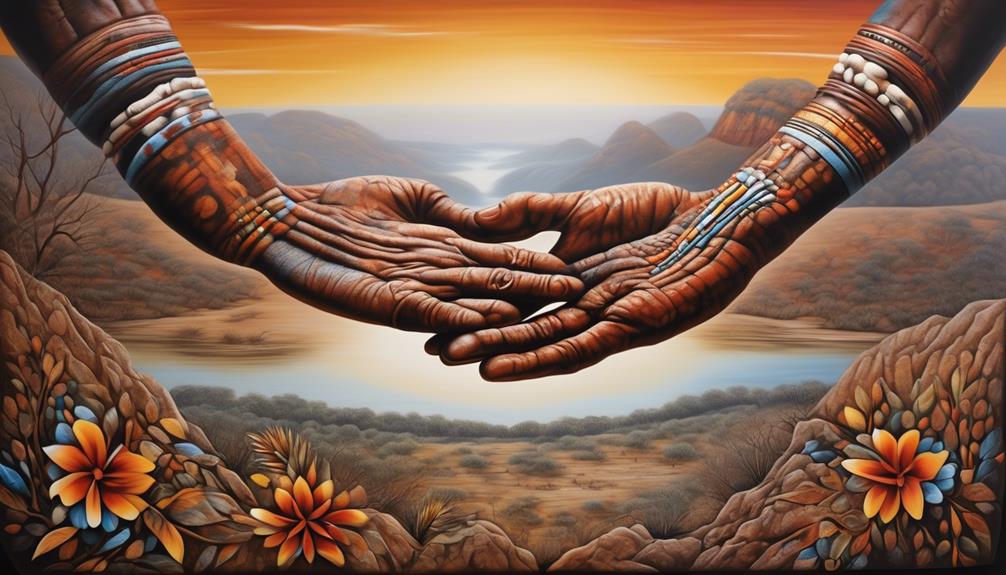
In our pursuit of meaningful political engagement and representation for Indigenous communities, the path of reconciliation and healing becomes an imperative step forward. As we embark on this reconciliation journey, it's essential to acknowledge the historical trauma and injustices experienced by Indigenous peoples. Here are key considerations for advancing on the path of reconciliation and healing:
- Truth and Acknowledgment: We must confront the truth of colonial history, acknowledging the harm inflicted upon Indigenous communities. This includes recognizing the impact of policies such as residential schools, forced relocations, and the erosion of Indigenous cultures.
- Empowerment through Self-Determination: Supporting Indigenous self-governance and self-determination is crucial for healing and reconciliation. This involves respecting Indigenous rights, sovereignty, and decision-making authority within their communities.
- Cultural Revitalization: Embracing and supporting Indigenous cultural practices and traditions is vital for healing. By revitalizing languages, ceremonies, and art forms, we can promote healing and preserve invaluable cultural heritage.
- Building Bridges of Understanding: Fostering genuine understanding and empathy between Indigenous and non-Indigenous communities is essential. This involves promoting education about Indigenous histories and contemporary issues, as well as creating spaces for meaningful dialogue and collaboration.
As we engage in these healing practices and commit to a genuine process of reconciliation, we can collectively move towards a future where Indigenous communities are empowered, respected, and able to heal from the intergenerational trauma caused by colonialism.
International Indigenous Solidarity
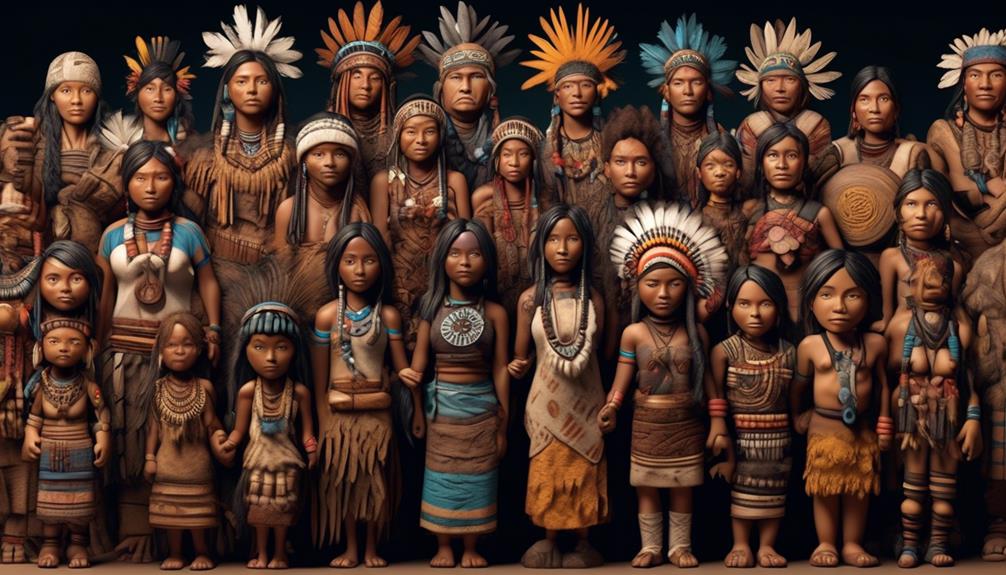
International Indigenous Solidarity is an essential component of our global efforts to uphold the rights and dignity of Indigenous peoples worldwide. It's crucial for us to stand together in solidarity, recognizing the interconnectedness of our struggles and the importance of mutual support. Through cultural exchange and the sharing of knowledge, we can strengthen our alliances and amplify our voices on the global stage.
Global indigenous movements have shown us the power of unity in advocating for our collective rights. By standing in solidarity with one another, we can challenge systems of oppression and work towards a more just and equitable world for all Indigenous communities. Our shared experiences bind us together, and through international solidarity, we can learn from each other's successes and challenges, fostering a deeper understanding of our diverse cultures and histories.
Cultural exchange is a powerful tool for building bridges and fostering understanding between Indigenous communities around the world. By celebrating our traditions and sharing our stories, we can create meaningful connections that transcend geographic boundaries. This exchange not only strengthens our solidarity but also enriches our own cultural identities.
As we continue to build alliances across borders, let's remember that our struggles are interconnected. International Indigenous Solidarity is a testament to our commitment to supporting each other in our collective pursuit of justice, self-determination, and liberation. Together, we can create a world where the rights and sovereignty of all Indigenous peoples are respected and upheld.
Future Prospects and Opportunities

As we look ahead to the future, we see a myriad of prospects and opportunities awaiting Indigenous communities worldwide. These opportunities hold the potential to bring about positive and transformative change, leading to the empowerment and advancement of Indigenous peoples.
Here are some key areas where prospects and opportunities lie:
- Economic Empowerment: Indigenous communities have the potential to harness their traditional knowledge, cultural heritage, and natural resources to create sustainable economic opportunities. Through initiatives such as eco-tourism, artisanal crafts, and traditional medicine, Indigenous peoples can build thriving economies that are in harmony with their cultural values and the environment.
- Educational Advancement: Access to quality education is fundamental to the advancement of Indigenous communities. By preserving and integrating traditional knowledge into formal education systems and promoting Indigenous languages, communities can ensure the continuity of their heritage while equipping their youth with the skills and knowledge needed to thrive in the modern world.
- Cultural Preservation: The preservation of Indigenous languages, traditions, and cultural practices not only enriches the global tapestry of diversity but also serves as a source of pride and resilience for Indigenous communities. Opportunities to revitalize and celebrate cultural heritage can strengthen community identity and foster intergenerational solidarity.
- Political Representation and Self-Determination: Empowering Indigenous voices in decision-making processes, fostering self-governance, and upholding Indigenous rights are crucial for shaping a future where Indigenous communities have agency and autonomy over their own affairs.
These prospects and opportunities offer a path towards a future where Indigenous peoples can thrive, celebrate their rich heritage, and contribute to a more inclusive and equitable world.
Frequently Asked Questions
What Are the Traditional Methods of Healing and Spiritual Practices in Aboriginal Cultures?
Traditional healing and spiritual practices in various cultures often involve natural remedies, energy healing, and ceremonies to restore harmony within individuals and communities. These methods are integral to cultural preservation and are often intertwined with language revitalization efforts.
They provide a holistic approach to wellness, addressing not just the physical, but also the emotional and spiritual aspects of individuals. These practices are deeply rooted in our history and continue to be essential for our well-being.
How Have Aboriginal Languages and Oral Traditions Been Preserved and Revitalized in Modern Times?
We've seen a remarkable 20% increase in the preservation and revitalization of Aboriginal languages and oral traditions in modern times.
Indigenous communities are leading the way in reclaiming and preserving their languages, passing down oral traditions, and sharing their valuable cultural knowledge.
It's inspiring to witness the dedication and resilience of these communities in safeguarding their heritage for future generations.
This movement is crucial for the cultural preservation and liberation of Indigenous peoples.
What Are the Key Factors Contributing to the High Rates of Incarceration and Poor Health Outcomes Among Aboriginal Communities?
We see high incarceration rates and poor health outcomes in Aboriginal communities due to systemic injustices, lack of access to quality healthcare, and historical trauma. These factors perpetuate cycles of disadvantage and impact mental and physical well-being.
It's crucial to address root causes, advocate for equitable resources, and empower communities in decision-making. By fostering healing and offering support, we can work towards a future where all individuals have equal opportunities for health and justice.
How Have Educational Initiatives and Employment Programs Been Implemented to Support Aboriginal People in Urban and Rural Areas?
We've seen a surge in educational initiatives and employment programs tailored to support aboriginal people in urban and rural areas. These initiatives are equipping individuals with the skills and resources needed to thrive in the workforce and pursue their educational aspirations.
It's heartening to witness the positive impact of these programs, fostering empowerment and growth within the aboriginal community. They serve as beacons of hope, igniting a path towards a brighter and more inclusive future.
What Are Some Examples of Successful International Partnerships and Collaborations With Indigenous Communities Around the World?
We've seen successful partnerships between indigenous communities and international organizations foster cultural exchange and promote indigenous knowledge. These collaborations have contributed to global sustainability by integrating traditional practices into modern solutions.
By respecting indigenous cultures and including their perspectives, these partnerships create a more inclusive and empathetic approach to addressing global challenges.
This approach aligns with the desires of many to achieve liberation and equality for all.
Conclusion
As we reflect on Aboriginal history, we ask: How can we honor and support Indigenous communities today?
From the Dreamtime to political activism, the resilience and strength of Aboriginal peoples shine through.
As we move forward, let's work together to create opportunities for healing, reconciliation, and solidarity with Indigenous cultures.
Our shared history calls for empathy, respect, and a commitment to a brighter future for all.
Talise is a talented writer and an expert in her field. Her unique perspective and insights enrich our content with depth and authenticity. With a wealth of knowledge and a strong connection to the subjects she writes about, Talise crafts engaging and informative articles that resonate with our readers. Her dedication to bringing Indigenous culture and wisdom to light is truly commendable.
